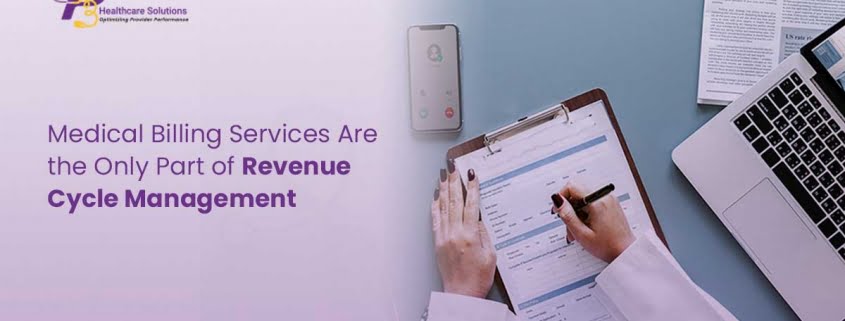Medical Billing Services Are the Only Part of Revenue Cycle Management
Medical Billing Services: Claim Submission and Follow-up
According to the HBMA, the process of submitting and following up on claims with health insurance companies to get paid or receive money is a medical billing process. Without the timely submission of clean claims, you will not be successful. It doesn’t matter how many patients you see or how many services you render.
A major part of accurate patient billing is the submission of accurate claims to both commercial and governmental insurance providers. Below are the components of the medical billing services process.
- Patient Check-in
- Insurance Eligibility and Verification
- Charge Entry
- Coding
- Claim Submission
- Payment Posting
In the financial management process, medical billing services are the only process that we refer to as Revenue Cycle Management (RCM). To fully manage your healthcare clinic, revenue cycle management is the only key to your institution’s success. Well, it’s inclusive of the components of medical billing services, and it goes beyond the payment posting to analyze, track, and successfully manage your patient’s claims on your account receivables.
All the Information managed by Revenue Cycle Management (RCM)
Managing the financial process is essential for your healthcare to practice or organization to run successfully. The revenue cycle includes everything “from registration and appointment booking to the final payment of a balance,” according to TechTarget. It has to do with the information entering and leaving.
- For building claims, claim preparation is inclusive of all the information
- During “preregistration” and “registration,” billing information is collected, and this is the ideal time to discuss service coverage and expected payment amounts.
- Coding and charge capture are essential steps in the speedy processing of claims.
- Claim Submission can only be good if all the information on the claim is processed directly by the insurance company through a clearing house.
- Claims Management
- It is simple to accept “remittance processing” and apply it to patient accounts or to “reject” it and consider it for a future payment.
- The management of “patient collections” is simple and rapid.
- With today’s RCM, “third-party follow-up” can be integrated.
- Reports and Analytics
- “Utilization review” might be useful for identifying shortcomings in practice.
Accounts Receivable: Analyze to Capture Payments
As patients progress through the care process, an efficient revenue cycle management system can shorten the time between providing a service and collecting payment by connecting with other health IT systems, such as electronic health records and medical billing systems.
Although we are aware of how important the data entering your system is to the medical billing procedure, the last step in controlling the revenue cycle is to fully understand your accounts receivable. Understanding the state of your firm requires having the capacity to run reports and examine the condition of your accounts receivable.
A timely and accurate financial report can be an invaluable tool for accessing your practice’s financial health. It’s good to have the habit of studying your practice “daily, weekly, or monthly”.
- Cash flow daily report is required.
- Staff should be instructed to collect patient responsibility at the time of service, where doing so is the cheapest option.
- Track write-offs to identify payors who are paying more than they should for “an agreed-upon proportion of fees.
- Your practice will be able to review “charges, payments, and adjustments” with the use of “weekly ‘collection reports'”.
- It’s crucial to follow the steps for writing off or placing patient balances with a collection agency.
- For “checking your practice’s overall financial health,” monthly reports are helpful. You can determine whether your practice is trending toward profitability or not by comparing the current year to the previous one.
- Examining “accounts that are above 60 days” to make inquiries about payment delays.
Key Process Affect the Account Receivables
The quickest collection period is the main objective of accounts receivable management. Every department must cooperate for accounts receivable to be successful and for the healthcare facility to be paid for its services.
- To ensure that bills are sent out accurately and without fraudulent information, “legal concepts” require teaching and training workers.
- Since “managed care organizations constitute up to 50% of the net revenue of most physician offices,” “contract discussions” are crucial.
- A crucial instrument to “cover both ethical and legal notions” is the “Compliance” guidebook.
- To improve patient experiences, “patient rights” are crucial.
- Patients are more actively involved in medical practice thanks to “patient access.”
- It’s crucial to “charge capture” for the services provided.
- The process of preserving, storing, and retrieving patient health information in conformity with applicable federal, state, and accrediting agency regulations is known as “health information management.”
- At the medical office, accurate and timely billing and receivables collection is ultimately the responsibility of Patient Financial Services.















Leave a Reply
Want to join the discussion?Feel free to contribute!